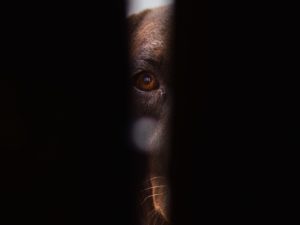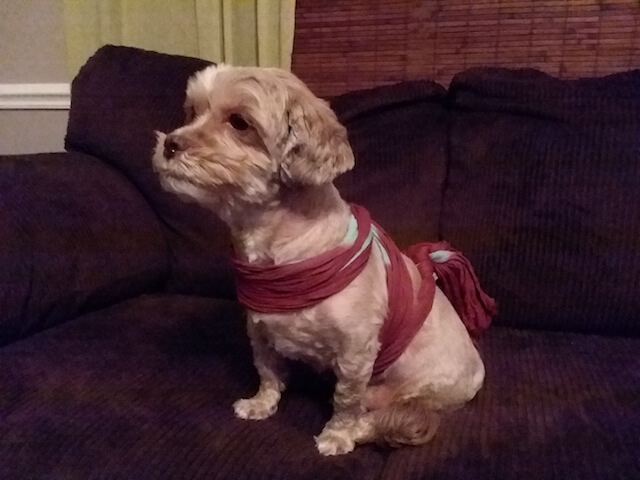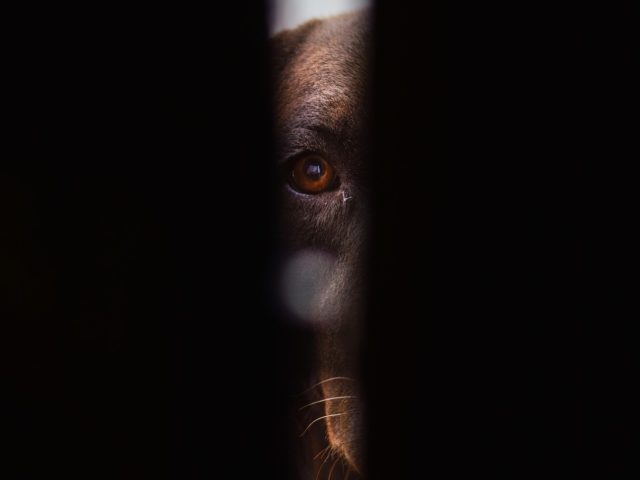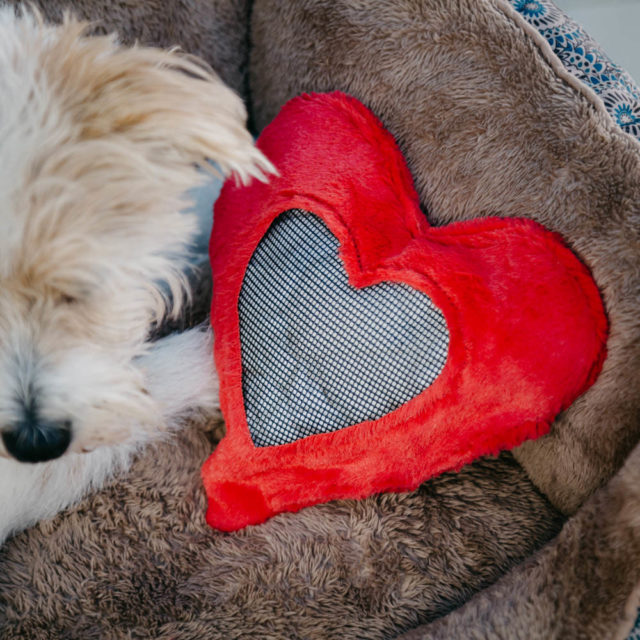
You can get to feeling pretty helpless watching your dog freak out during a thunderstorm. Nobody likes the loud, sudden noises, but your dog’s sensitive hearing makes it outright unbearable. Your dog may show his fear in a number of ways, and it’s best to watch for these signs of fear and anxiety before you try to approach or engage him – a dog can become aggressive with even the people he loves most when he’s scared or stressed.
You may notice:
- Yawning
- Whining
- Urination
- Pacing
- Destructive behavior
- Growling
- Avoiding eye contact/averting the eyes
- Flattened ears
- Tail tucked between the hind legs
- Cowering
- Biting/Snapping
- Lip licking
- Raised hair on the back of the neck
- Scratching self
- Clinging
- Barking
You may not be able to pack up all your belongings and start a new life underground, or control the weather, but you and your dog aren’t totally helpless. There are steps you can take to help both you and your petrified pooch weather the storm.
1 . Thundershirt/Wrap
Constant, gentle pressure has been known to relieve anxiety in both humans and pets. The Thundershirt is made especially for dogs and cats who suffer during thunderstorms by “hugging” their body in a way that keeps them calm. Think of it as swaddling a baby or falling asleep under a weighted blanket. If you’d like to know the science behind the technique, you can learn more about it by clicking here.
If you’d prefer not to order a Thundershirt, you can learn a Quick & Simple Hack That Will Relieve Your Dog’s Anxiety here on iHeartDogs.

2. Create A Safe Space
Sometimes, it just feels nice to hide and be alone – it’s one of those deeply ingrained instincts that stuck around from a time when carnivorous predators roamed. Thunder may not be a “predator” from which your dog really needs to hide, but if he prefers to deal with it by holing up, make sure he has a safe, convenient spot available.
If your dog was crate trained, it will likely be his go-to spot. He may also like a corner away from windows, or a spot under the bed. Gather a few of his favorite things, like his blanket and best-loved toys, and put them in that area. Your dog may not want to come out, but rest assured that he’s happy in his hidey-hole.

3. Be There
Nothing makes your dog feel calmer than being with you, his favorite person. You’re his family, and you make him feel safe. It might not be best to coddle him when the thunder starts – he’ll learn that the sound means that he gets unlimited cuddle time. Instead, try to distract him. Playing games with him or working on some simple training can help take his mind off the Thunder. If he cowers, a few pats are fine, but resist the urge to bundle him up and rock him until the rain stops.
You might also try the “When You’re Away” Comfort Cuddler. Stuff it with some clothing you’ve recently worn that carries your scent, and your pup can cuddle up but still leave your hands and lap free.

4. Music/White Noise
Distracting your dog might be as easy as just turning on a radio, especially if the thunder isn’t so loud it’s shaking your walls. Putting on some nice music (dogs seem to prefer reggae) can drown out the sound of the thunder. White noise will also do the trick if you have a radio you can tune to static or a baby monitor receiver handy. It doesn’t have to be too loud – remember, your dog’s ears are sensitive.
Fireworks weren’t that bad this year so here is a pic from last year pic.twitter.com/7ZYWVKXPYu
— emily (@spaghemily) July 4, 2017
5. Try CBD
Parents to anxious dogs are turning to CBD to help their pups cope with stressful situations. CBD helps ease anxiety naturally by interacting with your dog’s body’s endocannabinoid system.
These statements have not been evaluated by the Food and Drug Administration. This product is not intended to diagnose, treat, cure, or prevent any disease. The information on this website is not intended to replace a one-on-one relationship with a qualified healthcare professional.
The post 6 Strategies For Helping Your Dog Deal With Thunderstorm Anxiety appeared first on iHeartDogs.com.
via Whisker Therapy
